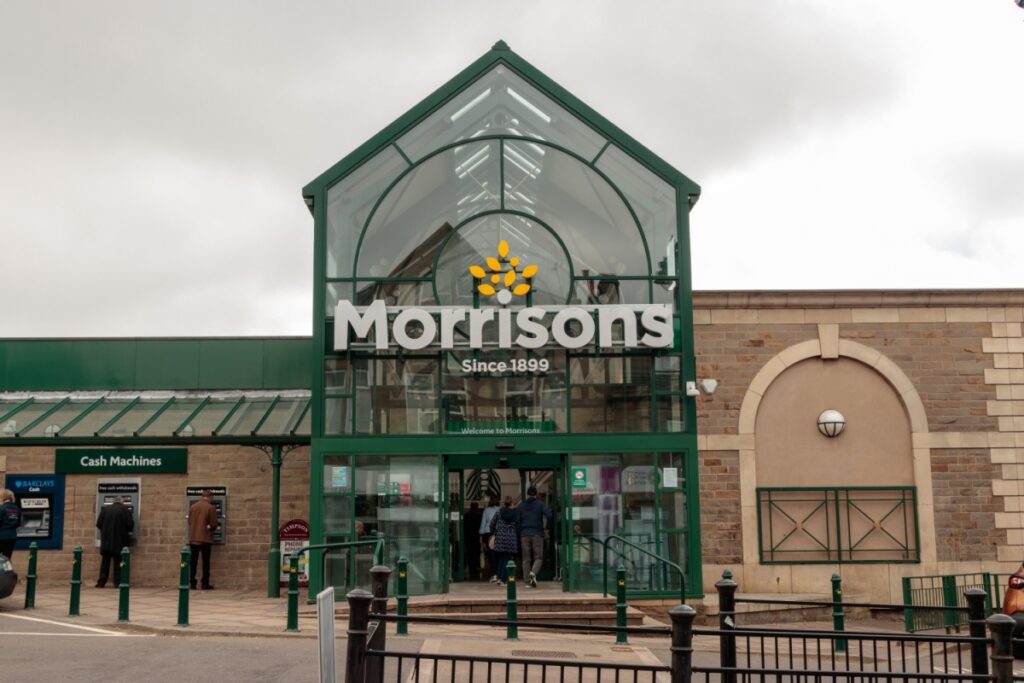Last month, Morrisons confirmed that it had reduced its debt burden by almost 40% as part of wider turnaround efforts driven by new boss Rami Baitieh.
The Bradford-based company has repaid £2.4bn of debt overall since it was snapped up by private equity owner Clayton, Dubilier & Rice (CDR) in 2021. Repayments to date have brought its overall debt pile down to £3.8bn, from £6.2bn.
To deliver these savings, Britain’s fifth-largest supermarket chain has pushed ahead with a host of cost-cutting measures. Last March, former Morrisons CEO David Potts pledged to deliver £700m of cost cuts over a three year period, which included restructuring its logistics operations, cutting down night shifts in stores and, most recently, gearing up to close its bakery business.
However, many staff members and shoppers have been left unhappy with the state of stores in recent times, with complaints seen across social media over empty shelves and a lack of staff members.
@Morrisons Doing away with the nightshift is an awful idea. The Airdrie branch is just horrible in the mornings. Empty shelves, pallets of goods and cages all over the shop. Well done Rami Baitiéh for making the customer experience horrible to save some £s.
— Jamie Jac (@jamie1c) November 28, 2024
Morrisons’ efforts to reduce its debts come in tandem with the grocery chain attempting to win back customers – and a key tenet of Baitiéh’s turnaround plan has involved listening to customers.
The CEO has pledged that Morrisons will not hold any major meeting without attendance of a customer panel to provide insights on how it could improve, as well as launching monthly customer roundtables in stores.
Despite this, recent Kantar data shows the grocer’s market share slipped to 8.6% in the 12 weeks to 1 December – and Baitiéh has acknowledged that “Morrisons has not been on peak form” since the pandemic.
But can Morrisons successfully regain ground in the highly competitive grocery sector while simultaneously delivering significant cost savings – or will its debt reduction come at the cost of market share and customer satisfaction?

Streamlining operations
Morrisons has been busy this year restructuring and streamlining its operations in an effort to reduce its cost base.
It was revealed in March that the grocery chain was looking to cut almost 300 jobs as it sought to consolidate the number of warehouse manager roles at each of its seven distribution centres under a single operations manager role.
The restructure also included removing team manager roles in its ambient supply chain, reducing roles in its chilled chamber and reducing the number of managers and co-ordinators working within canteen teams.
Last month, Morrisons confirmed that it was closing down its bakery arm, Rathbones bakery, in a decision that put 400 roles at risk of redundancy.
Speaking to The Grocer, a Morrisons spokesperson said it had carried out a “thorough review” of its bakery arm during the past few months, but that the division “has been lossmaking for a number of years” despite investment.
The supermarket’s bakery is not the only facility that has been earmarked for closure. Last year, Morrisons also confirmed plans to shut down its manufacturing centre in Bradford as part of its three-year, £700m cost-saving operation. The closure saw 450 roles across the grocer made redundant.
Streamlining operations to cut costs in retail is nothing new. But Shore Capital director Clive Black does not think the supermarket has always pulled the right levers when reducing its cost base.
“Early in Morrisons ownership by CD&R interest rates sharply rose and so debt servicing costs followed. In a bad and short term move the new owners looked to raise prices and cut costs to protect profits and cash flows,” he says.
“It cut too much labour out and allowed its price file to rise to try and protect profits to cover debt costs.”
While Black says Morrisons is now pulling the right levers “iteratively”, he believes steps taken to reduce the grocer’s debt in the early years of CD&R’s ownership “took the business backwards.”
Similarly, Thought Provoking Consulting partner Richard Hyman says: “Cutting costs is the easiest thing in the world – you just stop spending money.
“But you can only do that for so long, and ultimately you have to invest in driving that revenue line, and that comes back to delivering in store.”
Availability issues?
In August, Morrisons reported it was cutting down night shifts, moving towards a combination of twilight and early shifts to make its business more efficient.
The supermarket said at the time the move away from traditional night shifts was “a progressive step, delivering a better store replenishment, a better customer experience and better continuity in the store”.
While executives at the time claimed the change was not about saving money, the move meant some workers would miss out on the extra £2.35 per hour previously paid to those working at night.

The move has since been criticised from some staff members, who claim the new schedule inconveniences workers, and has resulted in issues including pallets in the way of shoppers.
This was evident when Retail Gazette visited Morrisons’ Oxted branch, where rows of trolleys filled with boxes and cartons were seen on the shop floor.
Meanwhile, in its Kings Cross store, food shelves were left sparse, while other displays looked in need of some maintenance.
Despite its struggles, in September, it was reported that Morrisons’ availability had improved by 2% year on year, aided by AI-powered availability cameras across over 400 stores.
A spokesperson for Morrisons said: “The Simple Replenishment Programme is a progressive step, delivering a better store replenishment, a better customer experience and better continuity in the store.
“In the stores where it has been introduced, we are seeing better availability, reduced overstock, increased productivity, greater customer satisfaction and less waste.”
They continued: “We recognise that fewer nightshifts does not suit everyone, but the move is widely popular with our colleagues.”
Bringing supermarkets up to speed
While Morrisons has been busy restructuring its logistics operations, Baitiéh has also been focused on delivering against his target of commercial excellence.
This has included the trial introduction of scan and go in six of its supermarkets.
Despite previously installing a host of self-checkouts, the supermarket made a U-turn on the machines in August.
At the tiime, Baitiéh said: “Morrisons went a bit too far with the self-checkout. This had the advantage of driving some productivity. However, some shoppers dislike it, mainly when they have a full trolley.
“We reviewed the whole estate and it appeared that 20 stores must balance the number of self-checkouts versus the number of tills.”

Has it cut back too much?
Against the backdrop of changes, Hyman notes shoppers have been left disappointed with Morrisons’ experience in store in recent times.
“The trading performance of the company, and its market share performance over the period, tells a clear story that the customer experience has proved so disappointing for some customers that they’ve gone elsewhere,” he says.
Morrisons’ market share has averaged at around 8.6% for the last six months. By contrast, competitors Tesco and Sainsbury’s recorded a combined market share of 44% of the UK grocery sector this month – driven by Tesco hitting its highest market share since 2017, at 28.1%.
“An issue for [Morrisons] is that Sainsbury’s and Tesco are trading very strongly and that middle ground, where Morrisons is trading, is really really tough. Over the past five years it has become significantly tougher,” explains Hyman.
The supermarket has also faced steep competition from German discounter Aldi, which overtook Morrisons to become the UK’s fourth biggest supermarket in September 2022 and now holds 10.3% of the market.
Black says Morrisons is a long way off from returning to its former ranking as one of the UK’s top 4 grocers.
“It is not opening new stores versus some opponents, and the gap with Aldi is now too large for near term overtaking,” he explains.
Hyman agrees that “the four ahead of [Morrisons] are better” – although he flags that competitor Asda has similarly struggled with market share and cost-saving measures.
“The question is, who are they going to take market share from in a market where lots of their direct competitors are better than they are?”
Despite its lacklustre performance, Morrisons has remained determined to win back shoppers.
The grocer has pushed ahead with a raft of innovative measures in recent times to win back market share, including ‘stop and rest’ areas in store, extended ‘quieter hours’ to give customers a calmer shopping experience, and even child-sized trolleys to make the shopping experience easier for parents.
The business has also invested in some price cuts to drive sales growth – such as its pledge to price Christmas dinner veg at 10p for members of its loyalty scheme.
However, these improvements may not be enough to make up for the supermarket’s other issues as shoppers flock to its rivals, and Morrisons may be better placed to focus on improving key areas like its availability levels.
While Morrisons has delivered impressive debt reduction, its plethora of cost-cutting measures may have made the job of gaining ground on its rivals, many of whom are ploughing significant investment into their operations and store estates, even more challenging in the year ahead.
Click here to sign up to Retail Gazette‘s free daily email newsletter




























